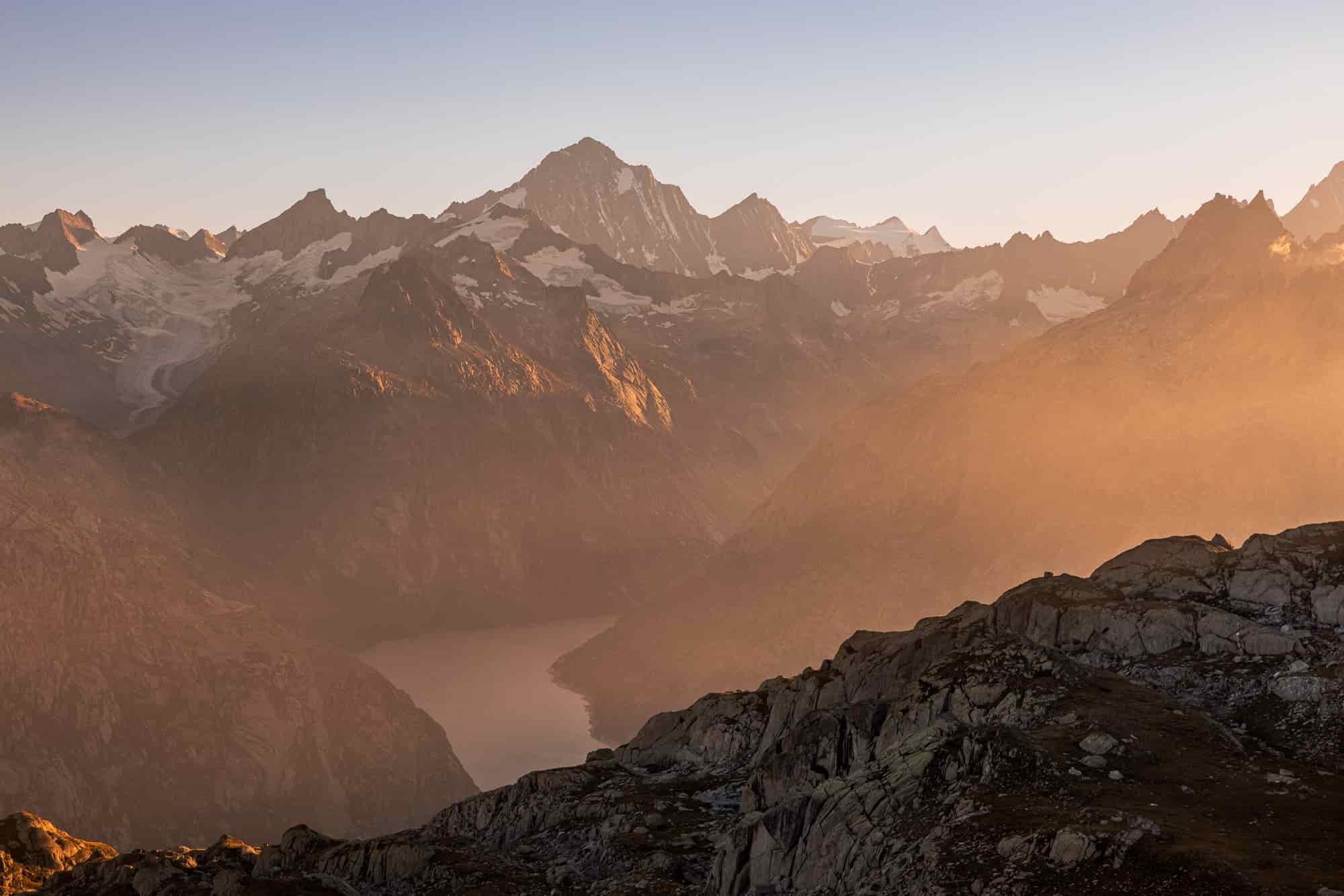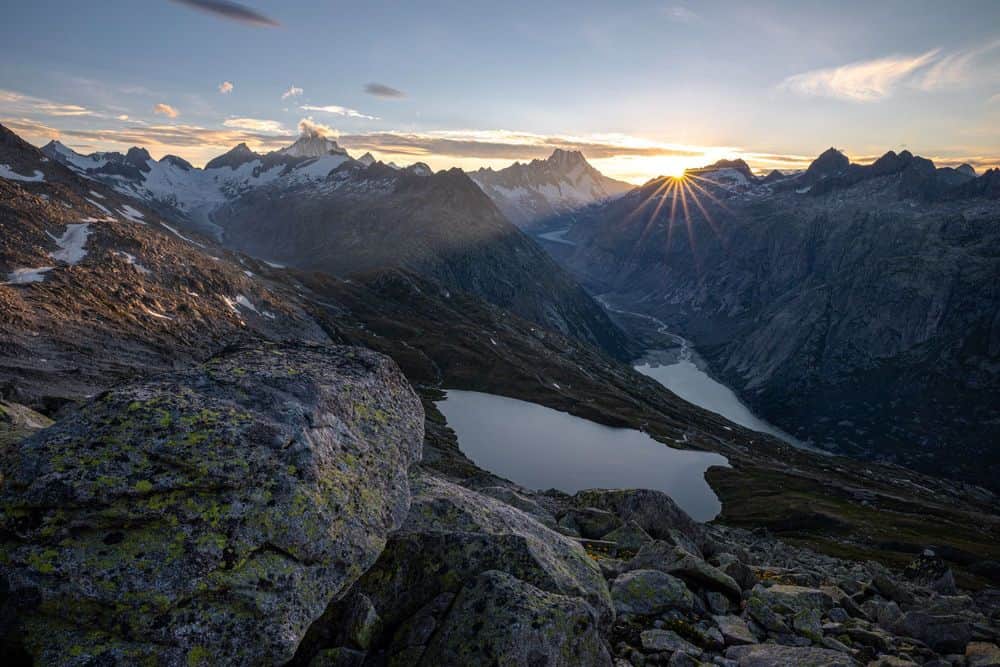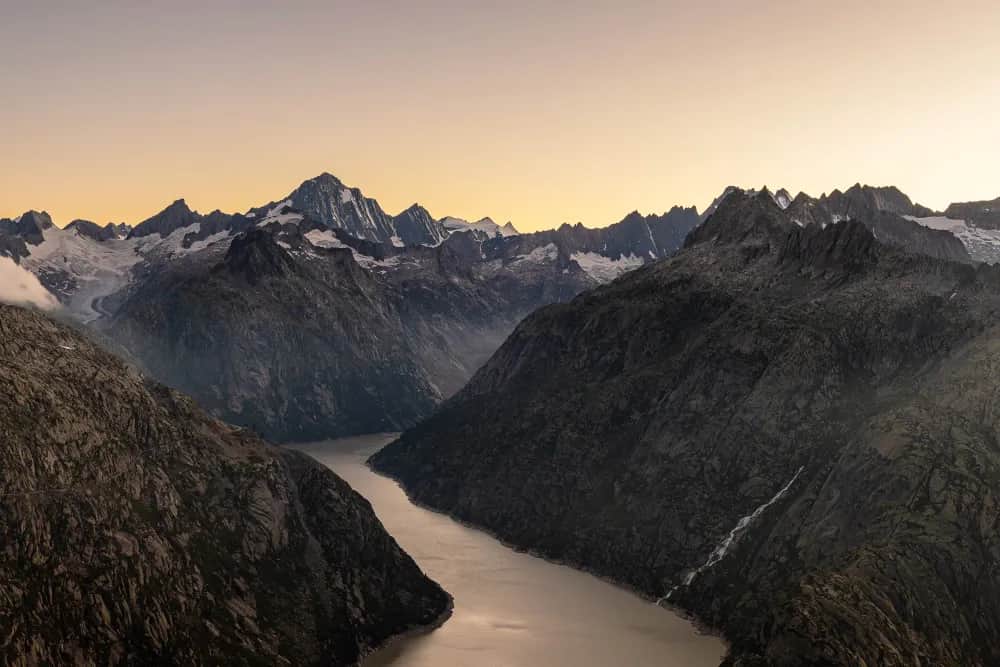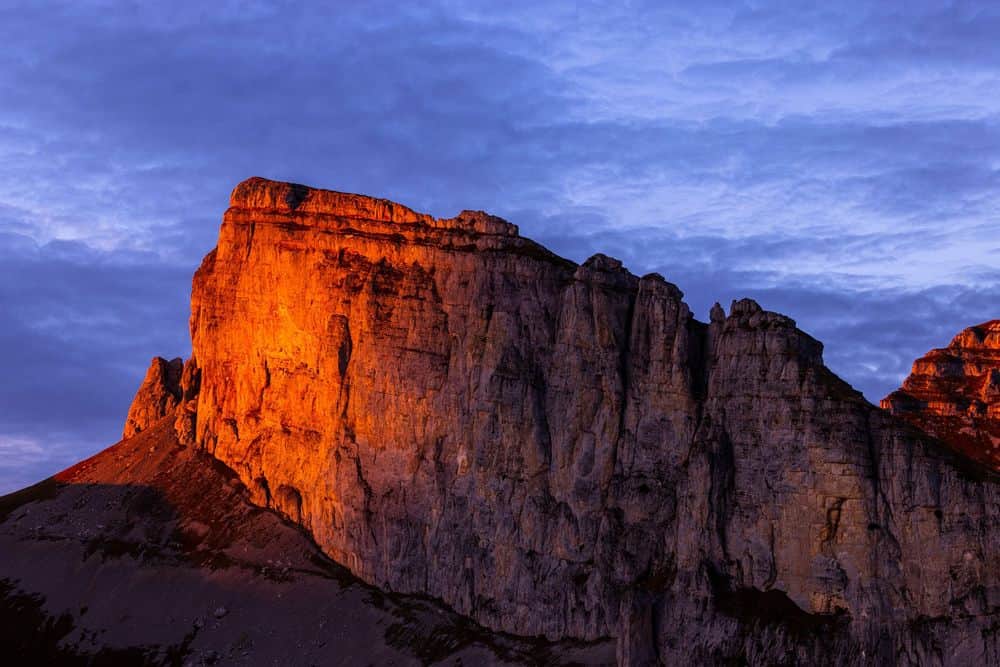2400 gigawatt hours of electricity generated by hydropower from the reservoirs in the Grimsel region is quite a lot. Kraftwerke Oberhasli](https://www.grimselstrom.ch), better known as the hydropower plants from the Grimsel world, use a total of 13 different locations within the region to generate clean energy from artificial reservoirs such as Lake Grimsel, Räterichsbodensee, Gelmersee and Oberaarsee. However, watercourses are also used to produce electricity in order to provide the required amount of power on demand.
If you drive along the road from Meiringen towards the Grimsel Pass, you will pass the barely visible dams of Räterichsbodensee and Grimselsee. The small Totensee at the top of the 2,164 m high Grimsel Pass, which is only open in the summer months, is also an artificial lake with a small north-facing dam. The landscape around Lake Grimsel in particular is impressive and unique, despite clear and numerous human interventions. The Grimselhospiz is perched on a prominent rock in the middle of this rugged landscape and can only be reached by driving or walking over one of the two dam walls of Lake Grimsel.
While Räterichsbodensee, Grimselsee and Totensee are dominated by the omnipresent traffic of the Grimsel Pass road, especially at weekends, Oberaarsee is much quieter. It lies in a remote location at an altitude of 2,302 m and can only be reached via a cul-de-sac several kilometers long, which ends at the dam wall. This is also where the Berghaus Oberaar is located, from here it is only possible to continue on foot. The Oberaarsee is part of the original source of the Aare, which flows from here to Bern and finally flows into the Rhine at Waldshut.
The Gelmersee lake at an altitude of 1,848 m, which is located away from the roads, is also part of the power station facilities. The lake, which holds 13 million cubic meters of water, is located in a small high valley and can only be reached via steep hiking trails from Handegg or with the help of the small Gelmerbahn, the steepest open funicular railroad in the world.
In addition to the diverse lake landscape that has been created over the decades, the Grimsel region also impresses with its high mountains and the huge glacial streams that continue to pour down into the valleys from the 4,000-metre peaks. The scenery is dominated by the mighty peaks of the Finsteraarhorn, Lauteraarhorn and Schreckhorn, which tower to the west of Lake Grimsel. They are among the most remote mountain peaks in Switzerland and can only be reached by long ascents to the respective starting points (mountain huts or bivouacs). And although the surrounding glaciers have already lost much of their mass, this region is still home to the largest glaciers in the Alps, the Aletsch Glacier and the surrounding ice masses.
The Grimsel region is very centrally located in Switzerland and is an impressive area in terms of landscape and energy production, with unique geological and glacial formations, enormous dammed water masses and an extensive network of hiking trails in summer and ski routes in winter. The preservation of such areas should therefore be an important goal for all of us, because as stable as the granite rocks may appear, such ecosystems react sensitively to human intervention.



